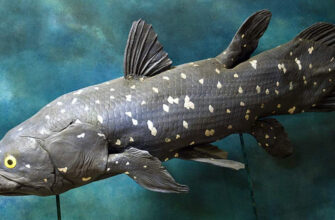Review of the best according to the editorial board. On the selection criteria. This material is subjective, does not constitute advertising and does not serve as a purchase guide. Before buying, you need to consult with a specialist.
Worms are, as a rule, not quite the 'living creature' that is customary to admire. There is something repulsive in them, which is why, when meeting with such a 'creeping reptile', you want to go home as soon as possible and wash your whole body with a hard washcloth. And if the worm also turns out to be very long, slimy and simply unsympathetic, then this desire increases many times over.
At the same time, earthworms common in central Russia, even the longest and largest, are small in comparison with some especially large species. As a rule, these creatures in 'our latitudes' grow up to 20-30 centimeters – and something interferes with their normal development all the time. Either birds, or shovels, or fishermen. If left unattended and placed in nutrient soils, they are capable of 'swinging out' to an impressive size.
And about how large these invertebrates are, we will tell in this material. We have collected seven of the longest and largest worms in the world! The rating includes representatives of all three largest families, so for a particularly impressionable reader who is not ready to get acquainted with multimeter parasites in the intestines of mammals, it is better to put aside prepared sandwiches.
- An overview of the longest and largest worms in the world
- 7th place: Planaria Rimacephalus arecepta (Baikal, Russia, up to 1 meter)
- 6th place: Australian giant earthworms (Australia, up to 3 meters)
- 5th place: Eunice aphroditois (world ocean, up to 6 meters)
- 4th place: Placentonema gigantissima (world ocean, up to 8.5 meters)
- 3rd place: Bovine tapeworm, aka tapeworm (the whole world, up to 10 meters)
- 2nd place: Wide tapeworm (the whole world, up to 15 meters)
- 1st place: Lineus longissimus (Northern Europe, up to 60 meters)
An overview of the longest and largest worms in the world
| Nomination | a place | name | Length |
| Ranking of the longest and largest worms in the world | 1 | Planaria Rimacephalus arecepta | 1 meter |
| 2 | Australian giant earthworms | 30 meter | |
| 3 | Eunice aphroditois | 6 meter | |
| 4 | Placentonema gigantissima | 8.5 meters | |
| 5 | Bovine tapeworm, aka tapeworm | 10 meters | |
| 6 | Wide ribbon | 15 meters | |
| 7 | Lineus longissimus | 60 meters |
7th place: Planaria Rimacephalus arecepta (Baikal, Russia, up to 1 meter)
Rating: 4.4
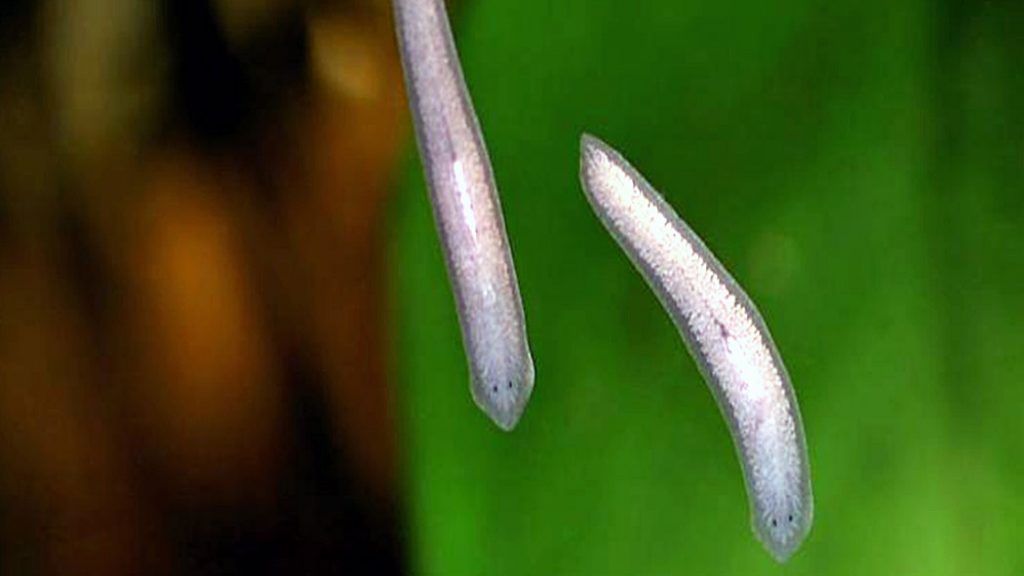
Planaria are one of the simplest flatworms found throughout the world. They live in water bodies – they can be found in the oceans and seas, and even in freshwater rivers. In most cases, they are not large, literally 2-3 centimeters, but the species Rimacephalus arecepta living in Lake Baikal can grow up to 1 meter in length!
Planaria are one of the simplest multicellular organisms. In fact, they are a 'crawling stomach' like sea cucumbers. The mouth of these worms is located on the belly – and while moving along the lake bottom, they scrape off even smaller invertebrates. And if the planarian wants to eat something larger, she will simply push her throat out of her body and grab it. The worm's digestive system is incredibly 'advanced' and has its own nerves and muscles. If it is removed from the animal, it will work for some time and even try to catch prey.
Interestingly, the planaria Rimacephalus arecepta, like other members of the species, are hermaphrodites, but they require sexual reproduction. That is, each worm can be either a male or a female, depending on the situation.
To move the planaria, they use special cilia that dot their entire body. Therefore, the worm can both swim freely and crawl along the lake bottom. Thanks to the visual organs, the animal is able to determine the top and them, measuring them by the level of illumination and a sense of balance.
Planaria Rimacephalus arecepta is of no interest to Baikal fish, since the skin of this animal is covered with venomous glands. That is why worms calmly develop to a relatively large size.
6th place: Australian giant earthworms (Australia, up to 3 meters)
Rating: 4.5

Australian giant earthworms are a subspecies of ordinary earthworms, only living, as the name implies, in Australia. There they calmly grow to impressive sizes – on average they are 80 centimeters in length, but the maximum recorded dimensions are 3 meters.
Australian giant earthworms differ from 'our' earthworms by their very noisy behavior. Moving in complex, intricate underground channels, they make noisy sounds, reminiscent of smacking or gurgling. Researchers use these signals to find these creatures. However, due to the fact that the species is classified as vulnerable and is recorded mainly in the Australian state of Victoria, it is rather difficult to study it.
The vulnerability of the position of the species is also stimulated by changes in natural habitat conditions. These giant earthworms prefer to settle on the clay shores of water bodies in the roots of eucalyptus trees. The soil in these areas contains enough organic and nutrient substances for the development of invertebrates. Only in recent years, the deforestation of eucalyptus forests in Victoria has led to the fact that the natural habitat of the species is being destroyed.
Australian giant earthworms simply do not have time to adapt to changing habitats. This is due to the fact that they have one of the slowest ontogenesis ('growing up periods') among invertebrates. Sexual maturity in these creatures reaches 5 years. In general, the worm is one of the long-livers, but even the approximate lifespan is not possible to establish due to the endemicity of the species.
5th place: Eunice aphroditois (world ocean, up to 6 meters)
Rating: 4.6
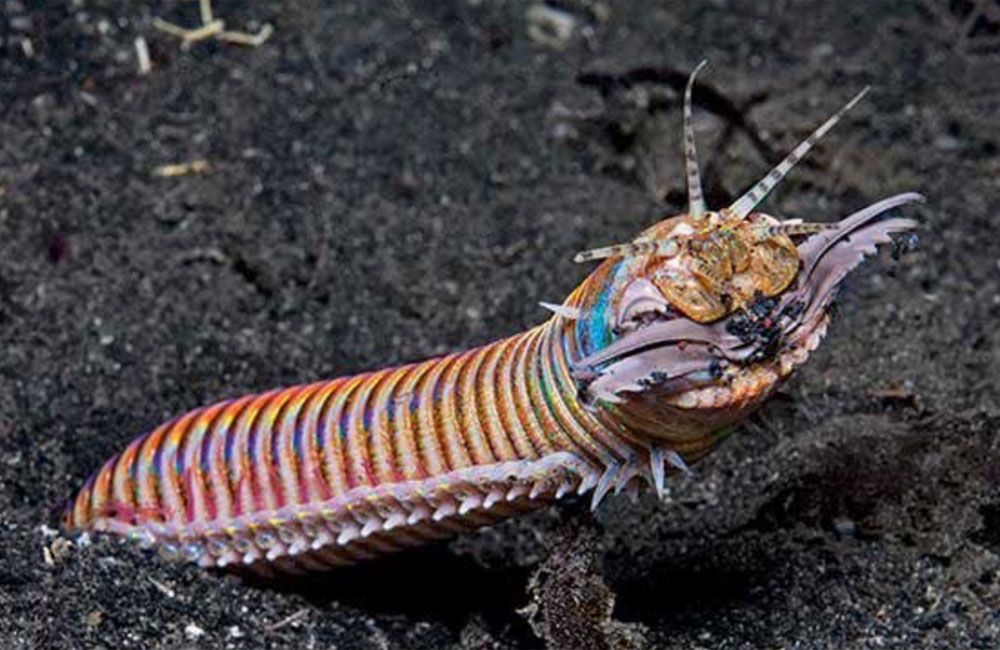
Eunice aphroditois is one of the largest polychaete worms in the world's oceans. This predatory and, frankly, very unsympathetic animal (primarily because of the shape of the mouth apparatus) is capable of growing up to a length of 6 meters! True, the vast majority of copies seem to be shorter, but this is not very encouraging.
Of particular interest is the way of hunting (and at the same time life) of this polychaete worm. Eunice aphroditois digs out deep burrows, where it is located almost entirely. Only the head of the invertebrate sticks out above the bottom surface. When a fish swims by, the worm straightens up with a sharp movement, grabs it with hook-shaped jaws and begins a meal. Eunice aphroditois can wait a very long time for a suitable meal – research shows that the creature can live without food for a whole year!
However, Eunice aphroditois is picky about food. If fish do not swim by, it may well feed on detritus: organic remains of flora and fauna, which 'snow' fall to the seabed and are actually a mixture of decomposed corpses of aquatic animals, as well as the remains of dinners from predators floating near the surface.
Like many other polychaete annelids, Eunice aphroditois has a rather interesting internal structure. Each of the segments of his body has its own duplicate set of organs. Therefore, if for some reason the animal loses a piece of its body – or even half – it will still survive.
4th place: Placentonema gigantissima (world ocean, up to 8.5 meters)
Rating: 4.7
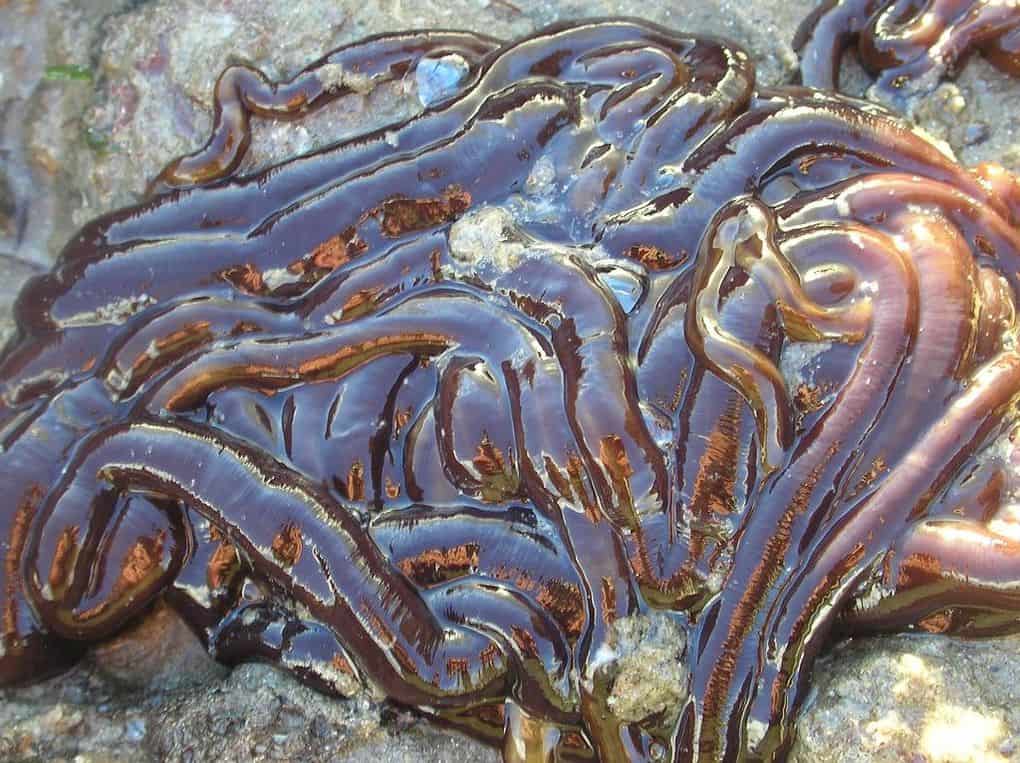
And here are the parasitic worms. If the previous species in the rating quite easily survive in the wild – in the clay soils of Australia, on the fresh bottom of Lake Baikal or in the salty waters of almost the entire world ocean – then Placentonema gigantissima lives only in the internal organs of whales. Moreover, these helminths infect not only the intestines and liver. Research has shown that Placentonema gigantissima can even develop in the placenta.
Parasitizing whales (in particular, sperm whales especially like this species), Placentonema gigantissima can grow to truly gigantic sizes, which is reflected in its name. So, the largest registered specimen had a length of 8.5 meters!
Placentonema gigantissima belongs to the type 'roundworms', they are also 'nematodes'. Almost all species from this group are parasites. They infect mammals, insects, and even other invertebrates. In humans, nematodes cause trichinosis, ascariasis and a huge number of other diseases. Plant parasites are also found among these annelids.
Thus, roundworms are one of the largest groups of parasitic invertebrates on the planet. Therefore, there is nothing surprising in the fact that they got to cetacean mammals, no.
At the same time, referring to roundworms, Placentonema gigantissima have an unsegmented body. Therefore, they cannot simply burst or split without mortal danger for existence. Unlike another parasite that is next in the ranking, and develops in the human body as well.
3rd place: Bovine tapeworm, aka tapeworm (the whole world, up to 10 meters)
Rating: 4.8
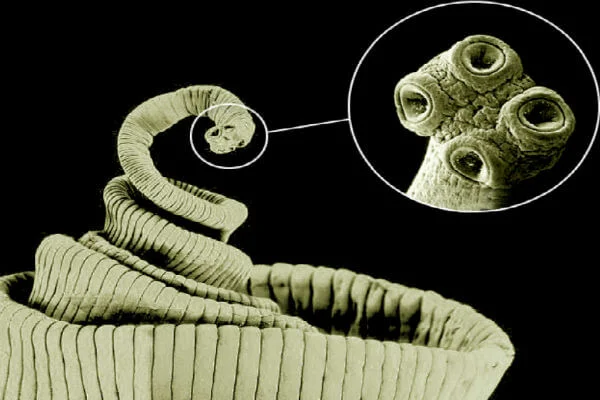
Bovine tapeworm (tapeworm) is one of the most dangerous parasites of humans and cattle. Most widespread in Africa, South America, and also in some Eastern European countries. In the absence of attempts to get rid of it, it can grow up to 10 meters in length – thereby significantly exceeding the linear dimensions of the host organism.
Bovine tapeworm, like many other parasites, goes through three stages of development. The first is the egg. They are excreted from the host in the faeces and remain on the grass. Then these plants are eaten by cattle, primarily by cows (as a result of which the invertebrate got its name). In the body of these mammals, the bovine tapeworm goes through the larval stage.
The larvae remain in the muscles of the animal. This is why eating uncooked steaks made from meat of unknown origin is quite dangerous. Together with the muscles, the bovine tapeworm penetrates into the body of the final carrier – a person. Here he passes into the tape stage, starting to grow and develop.
In the human body, bovine tapeworm grows to significant sizes. The body of an adult worm consists of 2-5 thousand segments. Solitaire can live up to 20 years! The adult parasite has an average length of 4 to 10 meters.
Despite the fact that the bovine tapeworm, like many other tapeworms, needs sexual reproduction, he is a hermaphrodite. Individual segments can fertilize each other. That is why the worm is capable of producing up to 600 million eggs annually.
The disease caused by tapeworm is called teniarinchiasis. It is characterized by cramping abdominal pains, appearing due to the mobility of the worm, increased appetite, and also a depressing effect on the psyche of the wearer.
2nd place: Wide tapeworm (the whole world, up to 15 meters)
Rating: 4.9
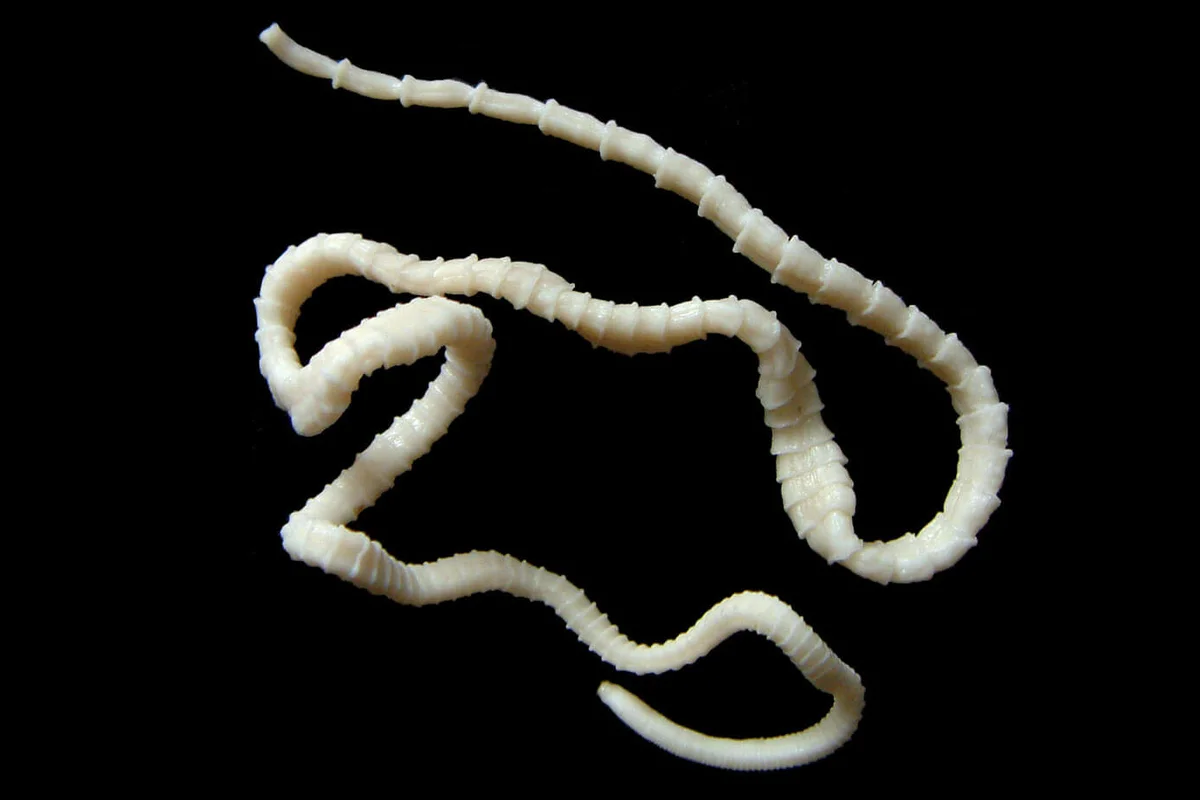
The broad tapeworm is another tapeworm that is a human parasite. It enters the body along with poorly cooked fish, thereby determining the danger of eating poorly cooked seafood (including sushi and other Japanese dishes). After penetrating a person, the broad tapeworm attaches itself to the small intestine, where it begins to develop, reaching a maximum length of 15 meters. Although, however, most individuals are 2-3 times shorter. But this is not very encouraging for the speakers.
The broad tapeworm is characterized by a long and multi-stage life cycle. The eggs of the worm, as in the case of the bovine tapeworm, enter the water along with the feces from the host organism. In liquid, they turn into a coracidium larva. She floats freely in the water until she meets the first host.
The first host is tiny copepods. In them, the procercoid larva is based in body cavities and calmly waits until this arthropod is eaten by the fish. This is how the worm gets into the second host. In fish, it turns into a plerocercoid larva, which is anchored in muscle tissue.
From poorly processed fish, the plerocercoid larva enters the human body. Here it is fixed in the small intestine, where it begins to develop into an adult worm.
The disease caused by broad tapeworm is called diphyllobothriasis. It is widespread even on the territory of the Russian Federation, but is localized primarily in the basins of various rivers – the Volga, Yenisei, Ob, and so on. It is also found in the Murmansk and Leningrad regions. In humans, the worm can live up to 20 years.
Infection leads to discomfort, abdominal pain, nausea and vomiting, loss of appetite, weakness, and drowsiness. The worm also affects the neuropsychological system. For example, he does not like spicy and salty food – and therefore, if a host person eats such dishes, he will experience unpleasant sensations.
1st place: Lineus longissimus (Northern Europe, up to 60 meters)
Rating: 5.0
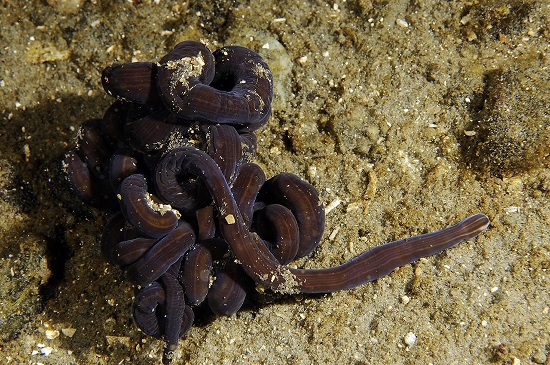
Lineus longissimus – the longest worm in the world and also the longest animal on the planet – can reach 60 meters! However, the vast majority of these creatures are several times shorter.
The worm lives in the coastal zone of northern waters. The easiest way to meet him is in the Baltics, the British Isles, and Norway. In Russia, he lives in the Baltic Sea. Outwardly, Lineus longissimus looks like a common earthworm.
Despite its impressive length, Lineus longissimus is a fairly slender worm. Even in the largest representatives, the body diameter does not exceed 10 mm. Like other nemerteans, it rarely stretches to its full size, and therefore it is easier to find it in a folded state.
It is clear that it is very difficult to grow to such a size on algae. Therefore Lineus longissimus is a predator. It moves along the seabed and hunts small invertebrates, capturing them with its trunk – a special movable tentacle in the mouth. If the fauna did not work out, Lineus longissimus can dine with carrion.
Attention! This rating is subjective and does not constitute an advertisement and does not serve as a purchase guide. Before buying, you need to consult with a specialist.





